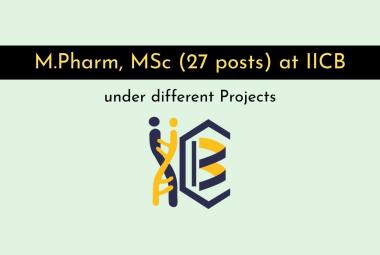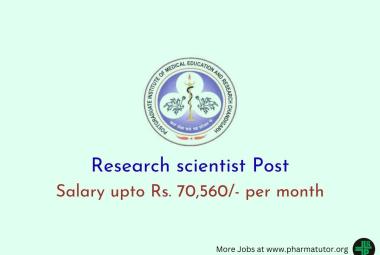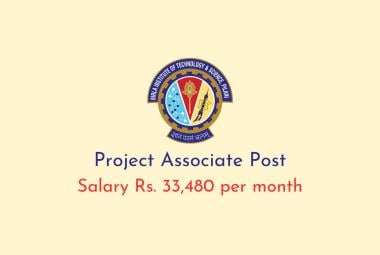{ DOWNLOAD AS PDF }
ABOUT AUTHORS:
Rhit Srivastava*, Saurabh Kumar Banerjee
School of pharmaceutical management,
The IIHMR University, Jaipur,
Rajasthan, India
rhitsrivastava@gmail.com
INTRODCUTION
Worldwide the Pharmaceutical industry dynamics is undergoing a significant transformation in terms of cutting edge advancement in the areas of pharmaceutical R&D specially the biotechnology based products, innovative drug delivery technologies, and large scale efficient pharmaceutical manufacturing capacities and so on. According to the list published by FDA for GMP facilities producing generic drug products and APIs for the US market 70% of the APIs and FDFs (Finished dosage Form Facilities) are produced outside US and India counts for 23.7 % of the API and FDF facilities and is by far the largest country exporting to the US. Even China counts for less than a half of the FDF and API facilities exporting to the US, as compared to India[1]
Since the enforcement of Patents (Amendment) Act, 2005 which is the third of the three amendments to the patents Act of 1970 and extends the product patent protection to the area of pharmaceuticals, a number of intellectual property (IP) and regulatory reforms have unlocked new opportunities for multinational companies (MNCs) in the Indian pharmaceutical market.
Amidst the uncertainties which are constantly prevalent in the Pharmaceutical environment India’s pharmaceutical industry holds a lot of promises ahead for the investors.
MOMENTOUS ECONOMIC GROWTH OF INDIA:
According to India Brand Equity Foundation over the period of 2012-20, total healthcare spending is expected to rise at a CAGR of 20 percent from US$ 65 billion to US$ 280 billion,with the pharmaceutical sales spending expected to increase to 27 percent by 2016 from 18.9 percent in 2008nbsp taking into account the percentage of the total healthcare spending [2]. It is quite evident from the figures that India’s pharmaceutical sectors will continue to be a promising avenue for investors and will support sustainable economic growth in days to come.
Not only in the healthcare sector from the point of overall country’s economy also Indian companies are amongst the ‘highest returns on equity’ in the world, despite similar or lower levels of leverage than regional peers. India’s liquid and diversified equity market offers a wealth of investment opportunities to investors. India’s working-age population is on track to grow at a highest proportion of its total population over the coming decades creating a rich human resource reservoir .[3]
The latest IMF Forecast predicts that growth rate in the country will be above the growth rate of China in 2016.[4] According to the Goldman Sachs report, until 2050 India will become the third largest economy. By 2025, India’s wealthiest segment is expected to be 24 million which is more than the current population of the Australia and by the same year India’s wealthy class will be larger than the china’s analogous segment, projected about 19 million. By 2025, India’s middle class will be three quarter of the urbanites, along with the shift from the rural to urban consumption. India will witness the rapid growth of its middle class households with projected disposable income of about 200000-1000000. [5]
India’s middle class is about 27% of the total population and it is growing now with their disposable income also increasing thus meaning that their buying power is increasing which is going to lower the load of the overhead expenditure.Ifthe Indian economy continues to grow on this track, it will positively impact the investment in the healthcare and a prominent portion will be of pharmaceuticals.
[adsense:468x15:2204050025]
INDIAN PHARMACEUTICAL SECTOR SETTING GLOBAL STANDARDS:
The Indian Pharma industry is today, the third largest market globally in terms of volume and 14th largest by value. According to PwC’s report Capitalizing on India’s growth potential, the domestic Pharma market is expected to grow at CAGR of 15 to 20% annually to be a USD 49 billion to 74 billion markets by 2020.[6]
Presently there are 10,500 manufacturing units and over 3,000 Pharma companies in India, growing at an extraordinary rate. India has about 1,400 WHO GMP approved manufacturing units. India has been accredited with approximately 1,105 CEPs, more than 950 TGA approvals and 584 sites approved by the USFDA. Globally more than 90 per cent of formulations approvals for Anti-retroviral (ARVs), Anti-tubercular & Anti-malarial (WHO pre-qualified) has been granted toIndia.India’s Pharma sales are expected to reach US$ 27 billion by 2016 [7].
India is well placed to become one of the major drivers in providing healthcare to all while controlling the ever-increasing healthcare spend of both developed and developing nations.[8] it is rapidly achieving a distinctive position in the global Pharma space with generics, Contract Research and Manufacturing Services (CRAMS) and clinical trials. Also as foreign MNCs fight for a share of the market, the fragmented domestic market is poised for consolidation.
AGING POPULATION AND CHANGING DISEASE PATTERN:
The long-term trends of an aging population and an increase in people inflicted with chronic diseases are expected to drive demand for health care services in both developed and emerging economies in 2014 and beyond.[9] once a chronic patient is brought on therapy, that patient will likely continue using the product throughout their lifetime.
India's population is forecasted to grow by 1.3 per cent, the prevalence of lifestyle disorders such as CVD, cancer and diabetes is about to increasing by between 25-40 per cent. A huge shift in the disease profile can be seen easily, with a major growth in chronic diseases. In 2010, India boasted the largest number of diabetic patients in the world, with more than 41 million sufferers. According to a 2007 report from PwC, this is projected to reach 73.5 million by 2025.Likewise, the country's ageing population – where forecasts predict 199 million Indians will be over the age of 60 by 2028 – is already leading to increased demand for medicines to treat CNS and cardiovascular diseases.[10]
New and upcoming NCE (New chemical entities) in the treatment of Chronic diseases with relatively less brand clutter and better patent protection are also making India a long term potential market
EFFICIENT SUPPLY CHAIN SYSTEM OF INDIAN PHARMACEUTICAL INDUSTRY
The Indian pharmaceutical distribution system is fragmented and disorganized with 60,000 distributors and 700,000 to 800,000 retailers.[11] which show a bright sign of having strong distribution channel which will be a boost for the industry.
The incorporation of tax on Goods and Services through GST would provide the extra advantage of providing credit for service tax paid by manufacturers. Both CENVAT & VAT, which are being levied at present, give tax credit to the manufacturer for the tax paid for raw materials (hence a tax is charged only on the value added by the manufacturer). More often than not, there are various services including logistics involved in getting the input material to its final customers.As Indian pharmaceuticals companies look forward reduce costs for increasing the revenue, GST provides a great opportunity to revisit their Supply Chain & distribution strategy to develop a nimble, modified and cost-efficient supply chain.[12]
HEALTH INSURANCE
Health insurance similar to that in the United States is just beginning to emerge for select populations; prescription drug coverage does not yet exist. In 2005, private, out of pocket, expenditures made up over 77%13 of the total healthcare spend essentially due to the poor quality of public healthcare facilities and the nascence of private insurance. However, increasing prosperity has resulted in greater demand for health insurance coverage (as approximated by premium growth). Between 2002 and 2005, total health insurance premiums grew at an annual rate of 36.2% and will continue to grow with the expanding middle-high income bracket (>$2000 per year). The middle income bracket is predicted to include 800 million people by 2015.[14]
GOVERNMENT REGULATION:
India's new product patent regime is the result of the WTO's Doha Round of negotiations in 2001. Final agreement was reached on TRIPs ground rules for patent protection among WTO member countries, stating that both processes and products should be protected.Subsequently, on March 22, 2005, India's parliament approved the Patents (Amendment) Act 2005, bringing in a system of product patents backdated to January 1, 2005. The new regime protects only products arriving on the market after January 1, 1995, abolishing the previous process patent system established by the 1970 Patent Act. Since the introduction of product patents the MNCs have largely returned[15]. The draft National Pharmaceuticals Policy 2006 states that the government is devoted to making India's laws and policies relating to IPR, including data protection, fully compliant with TRIPs provisions. Also, new rules are being designed under the Patents Act 1970 amendments introduced from April 1, 2005, for product patents, and these will be brought into law soon. “Under these rules, it would be the endeavor of the government to simplify procedures and shorten the timelines of various approvals,” says the draft Policy.[16]
Intellectual property, policies and regulatory environment is the key enablers which will definitely impact the ease of doing business and the attractiveness of the market yet are unpredictable and out of MNCs’ immediate control. The Indian government has given mixed signals on whether future policies and regulations will be supportive of multinational competition or protective of domestic players. Liberalized foreign investment policies and 100% FDI are also motivational factors for MNCs.
The government has started to develop an infrastructure for clinical trials in India, with amendments made recently to Schedule Y of the Drugs and Cosmetics Rules of 1945 to allow for multicenter concurrent clinical trials in India and address the protection of trial participants, and the integration and quality of data. Among other developments, Good Clinical Practice guidelines have been published and made mandatory.[17]
CONCLUSIONS
Among the various factors which have contributed towards the phenomenal growth in the Indian pharmaceutical industry are regulated environment of India, changing disease pattern, efficient distribution channel system, blooming health insurance, sound economic framework of the country. All these factors making a huge opportunity canvas for Indian Pharma industry and MNCs are ready to fill colors in this canvas. Increasing economic power and health insurance is going to cover the out of pocket expenditure of people and that means it will increase the buying power of customers. Favorable regulatory environment of India will not only give easy entry to the market but also provide protection. Proper distribution channel is the need of this industry and India has a strong distribution network system. According to the present Indian pharmaceutical industrial scenario India is an emerging market which is itself a sufficient reason to attract MNCs to enter in the Indian market. These were the right ingredients according to the need of the present market scenario all these factors make the Indian pharmaceutical market feasible and attractive enough to enter.
REFERENCES
1. GMPNews, 24/10/2013, gmp-compliance.org/enews_03940_FDA-publishes-List-of-GMP-facilities-producing-for-the-US-market--generic-drug-products-and-APIs-.html, accessed on August 24, 2015.
2. India Brand Equity Foundation, August 2015, ibef.org/industry/pharmaceutical-india.aspx, accessed on, August 24, 2015 (9/8/2015)
3. India | Economic Forecasts | 2014-2050 Outlook, Available at: tradingeconomics.com/india/forecast (Accessed: 2/13/2015).
4. Moody's (20114) Global Macro Outlook 2014-15, Press Trust of India: Moody's.
5. Goldmansachs (2010) India Revisited white paper, goldmansachs.com/: goldmansachs.
6. Forbes (1/21/2015) IMF: India's Growth To Be Faster Than China's By 2016, Available at: forbes.com/sites/timworstall/2015/01/21/imf-indias-growth-to-be-faster-than-chinas-by-2016/ (Accessed: 2/13/2015).
7. Eric D. Beinhocker, Diana Farrell and Adil S. Zainulbhai (2007) Tracking The Growth of Middle Class, mckinsey.com: Mckinsey
8. PwC Report – India Pharma Inc: Capitalising on India’s growth potential,2010
9. IBEF Pharmaceutical Sector Analysis, Available at: brandindiapharma.in/infographic-on-pharma-sector-business/ (Accessed: 2/13/2015).
10. EIU Report - India: Healthcare and pharmaceuticals forecast, 2006
11. Deloitte (2014) 2014 Global health care outlook shared challenges, shared opportunities, deloitte.com: Deloitte.
12. Chris Ross (2013) 'Changing disease patterns in the BRIC nations are providing new opportunities for growth', PMlive, [Online]. Available at: pmlive.com/pharma_intelligence/building_brics_pharmas_key_emerging_markets_are_becoming_giants_483972(Accessed: 23rd Feb 2015).
13. “Ready for the Medical Boom”, Biju Govind, Hindu.com Article, June 2006.
14. WHO Data, Deloitte Consulting LLP analysis.
15. Manish Panchal and Siddharth Paradkar (2014) GST: a sweet pill for Indian Pharma, Tata strategic management group.
16. IRDA/NCAER Surveys, Deloitte Consulting LLP analysis.
17. Economist Intelligence Unit, September 2004.
REFERENCE ID: PHARMATUTOR-ART-2396
|
PharmaTutor (Print-ISSN: 2394 - 6679; e-ISSN: 2347 - 7881) Volume 4, Issue 3 Received On: 16/09/2015; Accepted On: 06/10/2015; Published On: 01/03/2016How to cite this article: Srivastava R, Banerjee SK; Indian Pharmaceutical Industry - A plethora of Sustainable Growth Opportunities for pharma business aspirants; PharmaTutor; 2016; 4(3); 13-16 |
NOW YOU CAN ALSO PUBLISH YOUR ARTICLE ONLINE.
SUBMIT YOUR ARTICLE/PROJECT AT editor-in-chief@pharmatutor.org
Subscribe to Pharmatutor Alerts by Email
FIND OUT MORE ARTICLES AT OUR DATABASE









